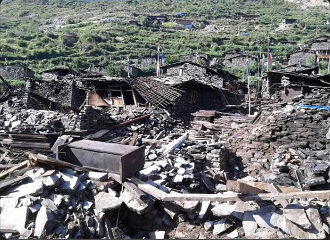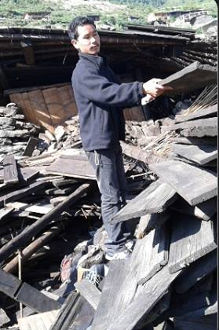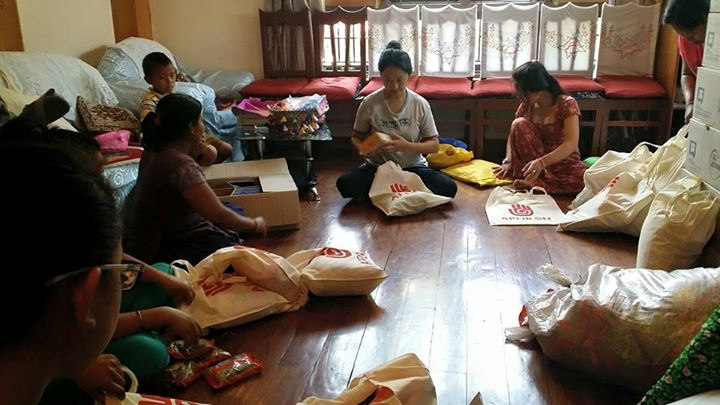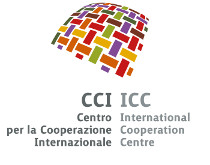Acqua contaminata e pericolo epidemie
Stando al Ministro delle salute, oltre l'80% dell'acqua nella Valle di Kathmandu è contaminata. Lo studio di 215 campioni raccolti a Kathmandu, Lalitpur, Bhaktapur, Kavre, Sindhupalchok, Dolakha, Dhading e Gorkha sono
risulati positivi ai batteri coliformi (incluso E coli).
 Solo il 29% dei campioni di acqua raccolti a Kathmandu è risultata potabile e con l'arrivo dei monsoni il rischio di epidemie di colera si eleva ulteriormente. Per gli esperti è anche preoccupante l'utilizzo massiccio da parte dell'ente erogatore
Solo il 29% dei campioni di acqua raccolti a Kathmandu è risultata potabile e con l'arrivo dei monsoni il rischio di epidemie di colera si eleva ulteriormente. Per gli esperti è anche preoccupante l'utilizzo massiccio da parte dell'ente erogatore
di acqua a Kathmandu - Kathmandu Upatyaka Khanepani Limited (KUKL) di cloro, tanto da far diventare l'acqua tossica.
Ciò che preoccupa gli esperti è l'elevato uso di cloro nell'acqua fino al punto di diventare tossica. "Il cloro purifica l'acqua, ma il suo utilizzo in elevata quantità influenza la salute pubblica", ha detto il dottor Geeta Shakya, direttore del National Public Health Laboratory. C'è la minaccia di di epidemie con l'arrivo anche dei monsoni. "La minaccia è sempre presente per la contaminazione dell'acqua.
Con i monsoni temiamo che potrebbe aggravare la situazione ", ha detto il dottor Khem Karki del Consiglio Nazionale Ricerca Sanitaria. A Kathmandu c'è anche un'alta concentrazione di zanzare, responsabile della malaria. Favorita anche dall'alta concentrazione di persone che vivono nelle tende. Guna Raj Lohani, portavoce del Centro di Emergenza Sanitaria, ha detto il livello di guardia è stato alzato e si consiglia di lavare frequentemente le mani, consumare acqua bollita e utilizzare le zanzariere.
Non è solo il clima inclemente e lâarrivo delle epidemie a rendere la vita delle tante famiglie sfollate a causa del terremoto pressoché impossibile. Per molti dei campi sorti ovunque nella Valle di Kathmandu un altro pericolo sono i gruppi di alcolisti che si aggirano tra le tende nottetempo. Ed ancora di più gli stupratori. Sono già stati denunciati 2 casi di avvenuto strupro e 5 di tentato stupro. Ma si pensa che il pericolo sia molto maggiore. Da qui la decisione di Apeiron di aprire uno spazio protetto temporaneo in uno dei campi. Vi terremo aggiornati.
English version below.
Above 80 percent of the water extracted from the ground or refilled from tankers and tap has been found contaminated, posing risk of water-borne disease outbreak in Kathmandu Valley, the Ministry of Health and Population (MoHP) warned on
Monday. The study of 215 water samples collected from Kathmandu, Lalitpur, Bhaktapur, Kavre, Sindhupalchok, Dolakha, Dhading and Gorkha tested positive for high amount of coliform bacteria including E coli.
Give the sample size, the Kathmandu Valley has the highest chance of water-borne disease outbreak, a phenomenon not entirely new for the city that has been seeing sporadic cases of cholera and other diarrhoeal disease. Outside Kathmandu
Valley, 13 samples were brought from Gorkha and Sindhupalchok and 14 from Kavre, among others, which have minimal chance for the spread of communicable disease.

The final test result showed that only 29 percent of the total 98 water samples collected from ground, taps and tankers was fit to drink in Kathmandu while among the 52 samples collected from Lalitpur only 23 percent was safe for
drinking. What worries experts is the high use of chlorine in water by the Kathmandu Upatyaka Khanepani Limited (KUKL) to the point of becoming toxic. âChlorine purifies water but its usage in high amount affects public health,â said Dr Geeta Shakya, director of the National Public Health Laboratory. The recommended range of chlorine residue in water is 0.1-0.2 milligram per litre.
Epidemic threats and preparations As monsoon approaches near, the MoHP is on a high alert against possible outbreak of diseases like cholera and dengue. âThe threat of the water and vector borne disease is always there. This monsoon we fear that it might exacerbate,â said Dr Khem Karki, member-secretary of the National Health Research Council. Research shows that Kathmandu it is highly susceptible to dengue outbreak due to high concentration of Aedes aegypti mosquitoes, the causative agent of the disease.
Officials said that since many people are living in tents and are in closer proximity, there are chances of dengue, which can become life threatening when the disease develops into a haemorrhagic fever. The symptoms range from mild fever to incapacitating high fever, with severe headache, pain in muscles and joints, and rashes. Dr Guna Raj Lohani, spokesman for the Health Emergency Operation Centre of the MoHP, said they have been raising awareness regarding hand-washing, consuming boiled water and use of mosquito nets for long. âOur surveillance system is in place and preventing the disease outbreak remains our first priority. In any case of outbreak, our system can contain it,â claimed Dr Lohani.
Inclement weather and outbreak of diseases arenât the only things that the families displaced by the earthquake and now living under tents need to worry about. There are also riotous drunkards and worse, sexual predators. Two cases of rape and five cases of attempt to rape have been reported in temporary shelters inside Kathmandu Valley since the April 25 earthquake. More probably the real figures. Apeiron has decided to work on opening FFS (female friendly space) in one or more camps. We will keep you posted!







